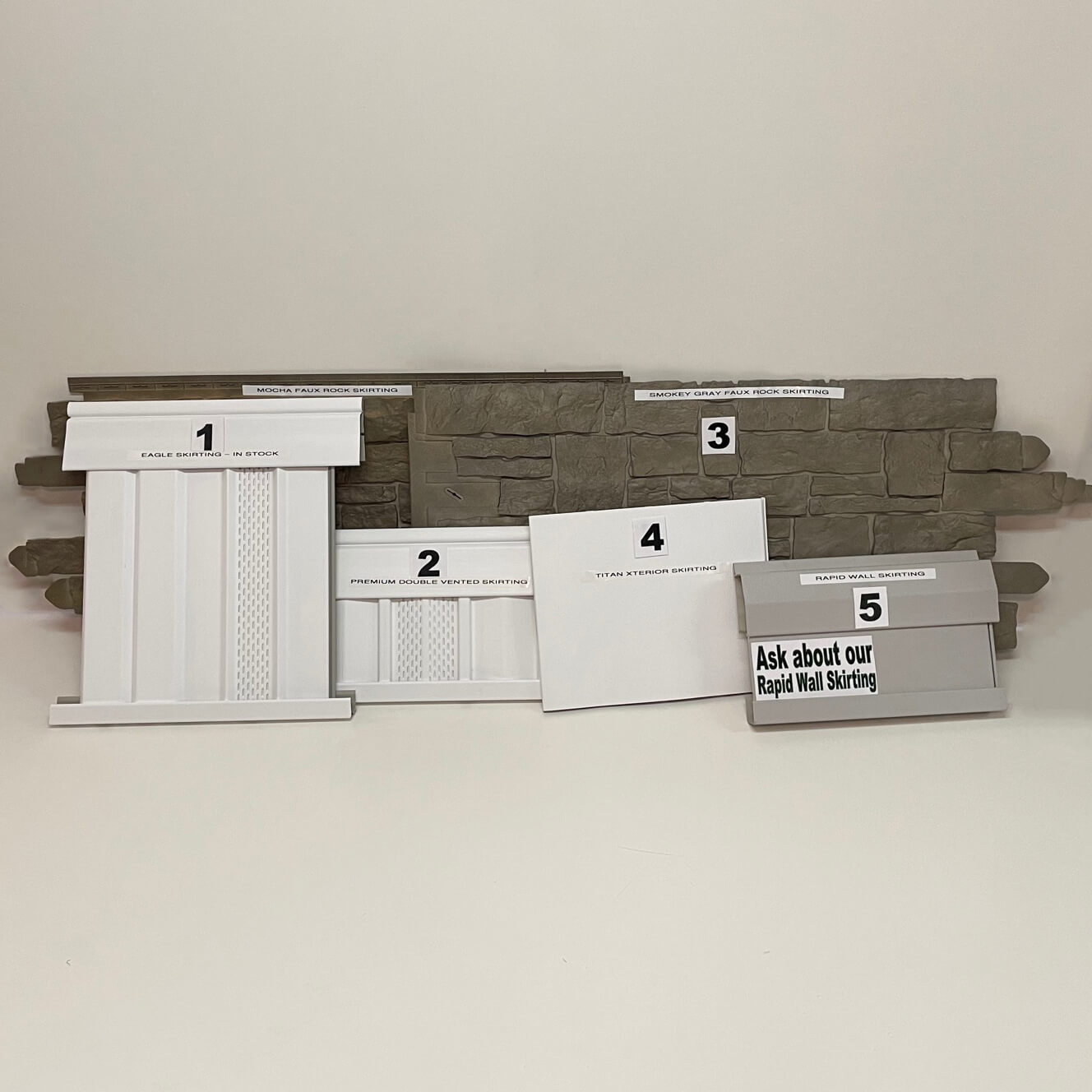Catching Up On Mobile Home Roof Maintenance and Repair
Types of Mobile Home Roofs
The type of mobile home roof will usually determine the kind of maintenance and repair you’ll have to do.
Flat vs. pitched mobile home roofs
Most mobile homes built before June 1976 have a flat or bowed roof. It’s one of the things to consider if you are thinking of buying an older mobile home.
Mobile homes built after June 1976 have roofs with more of a pitch or peak to them.
Mobile home roofing materials
Just as it is with the shape of your mobile home roof, the material the roof is made of may be an indication of your home’s age. Manufactured homes built before 1976 usually have aluminum sheet metal roofs.
Modern mobile homes have roofs made of metal roofing panels or asphalt shingles. Other types of roofing materials for mobile homes include PVC and rubber (TPO and EPDM) membranes.
Mobile home roof maintenance tips
A well-maintained mobile home roof doesn’t just make for a more comfortable home. It also lowers the risk of having to do costly repairs after damage caused by neglect.
Here are some tips to help you with the upkeep of your mobile home roof.
Identify the jobs you can do yourself
There are some mobile home maintenance and repair jobs you can easily and safely do on your own. Others you should definitely hire a professional to do. These might require more in-depth knowledge of mobile home roofing techniques and materials. In some cases, passing the job off to a professional is a matter of safety – yours!
Cleaning of your roof should be done once or twice a year. Your climate as well as the roof’s age and condition will help you decide on the frequency. Do not undertake the task yourself if you have any doubts that you can. You will be standing on a ladder for an extended period of time, reaching over your roof to scrub and do minor repairs.
Over-reaching from the ladder can be quite dangerous. So, too, is improper positioning of the ladder— so be careful! You should climb down and move the ladder over as often as is required for you to be safe. Watch how this mobile home repairer does it as he installs a metal roof.
Remember, too, flat roofs on older homes may have issues only someone with experience maintaining and repairing flat mobile home roofs would know how to handle.
Consider roof overs for flat roofs
A roof over is one way to repair a damaged roof on older flat-roofed mobile homes. A roof over involves applying a new layer of roofing over the existing layer on a flat or bowed roof. Roof overs are done as an alternative to ripping up and replacing the entire roof.
Prepping for a roof over usually calls for sanding the old roof surface and fixing any issues you come across. The old roof should also be sealed before the new roof is applied to the home. The job will require the services of a professional if you opt for a PVC or rubber membrane roof over. You can DIY it, however, if you choose to install your roof over as a corrugated metal roof.
Choose coatings, sealants, and patches with care
There is a wide variety of coatings, sealants, and patches used in mobile home maintenance and repair. They each have a different function and work best in different situations. Some work well with one type of material but will not be as effective if used on another.
There are those, however, that work well across a range of materials. The White InnerBond Butyl Sealant from Star Mobile, for example, is compatible with concrete, glass, masonry, metals, wood, and some plastics.
Mobile home roof sealants
Mobile home roof sealants are meant to repair your roof by creating a seal that stops the passage of moisture. They can also be used around openings to prevent leaks. Sealants can stop small leaks and prevent them from worsening.
Sealants come in two main types:
- Solvent-based sealants are very resistant to the elements (rain, sun, cold, etc.) They are, however, more expensive and more difficult to apply. Also, you may need to wear a protective face mask. It will prevent you from inhaling the fumes when using solvent-based sealants on your roof
- Water-based sealants are not as resilient but they are cheaper and easier to work with. Just be prepared to carry out maintenance on these sealants every few years.
Mobile home roof coatings
Mobile home roof coatings protect your roof as well as make it more durable and elastic. Tough enough coatings can protect against impact damage, such as from falling branches. Some coatings provide thermoregulation – keeping your mobile home cool or warm and helping to reduce your energy costs.
Elastomeric coatings come in acrylic, latex, urethane, and silicone form. Before you apply one of these coatings, use contouring tape to tape over the seams of your roof. Select your coating according to the material your roof is made of and the climate in which you live. For instance, mobile homes in warmer regions can benefit from the reflective property of white latex roof coating.
Asphalt aluminum is another type of coating for mobile home roofs. It contains bright silver particles of aluminum, giving it a shiny appearance.
Mobile home roof patches
These can be used for larger holes and repair jobs on your roof. One common type of patch is black mastic. It is often used for patching flat metal roofs. Black mastic, fabric webbing, and an asphalt aluminum coating are sold as a kit. Together they form an affordable system you can use to patch a mobile home roof.
Black mastic is also a part of another popular patching system. This one uses black mastic, a galvanized steel patch, and butyl rubber – laid down in that order. Screws are used to hold the steel patch firmly in place. The rubber has an adhesive backing to ensure it attaches securely to the metal.
Pay attention to snow
Snow will not slide off a flat roof as easily as it does off a pitched roof. This means mobile homeowners with flat roofs will have to be more diligent checking the amount of snowfall and looking for issues commonly caused by snow. Some pitched roofs have a low rise and are also susceptible to snow build-up.
Built-up snow and ice can be quite heavy. It can put undue pressure on older roofs and cause shingles and other roof structures to crack. Additionally, built-up snow can form ice dams, making the situation even worse. What’s more, the backed up melting snow can cause leaks and water damage.
The best way to deal with snow build-up is to get rid of it before it actually builds up.
- Use a snow rake to clear as much snow as you can – aim for at least four feet in from the eaves.
- If the snow that’s left behind does begin to form dams as temperatures fall, then you will need to clear it, as well.
- If your snow rake just isn’t getting the job done, it’s a sure sign you need to call in the professionals.









